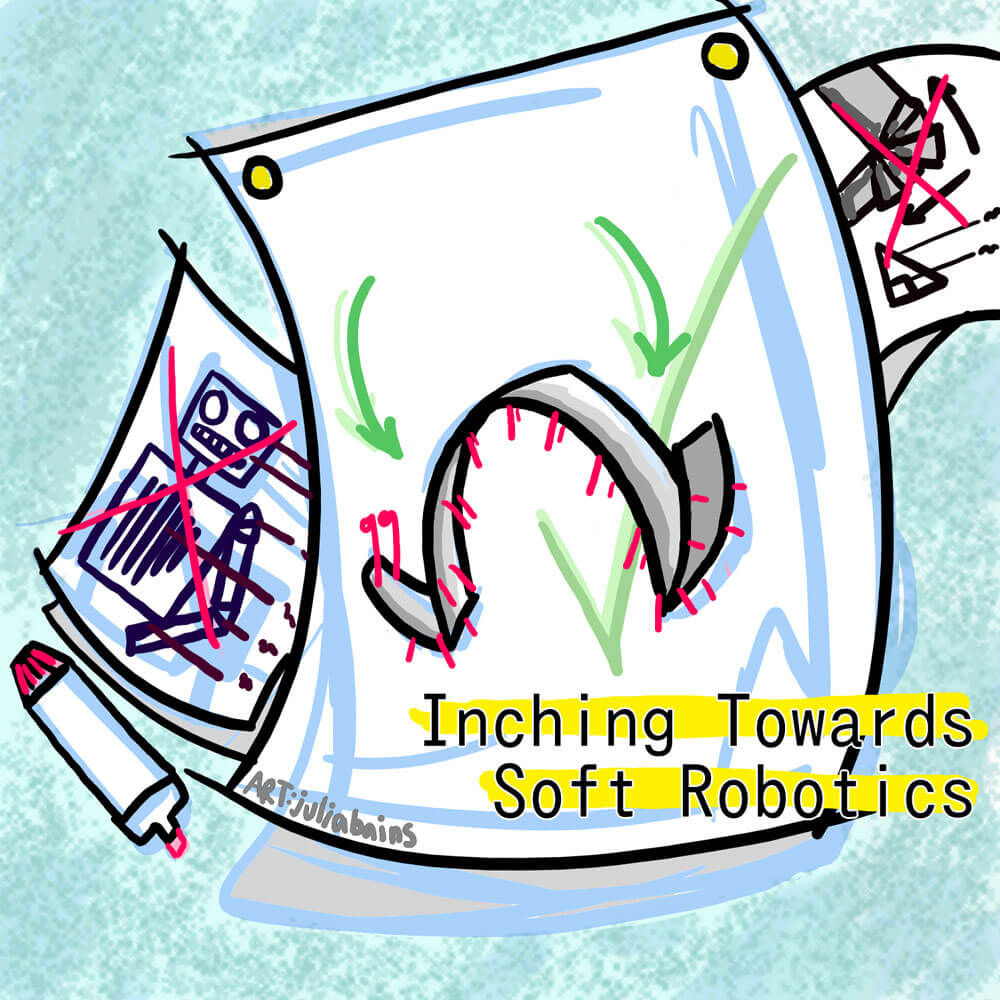
Written by Vivian Wang
Illustrated by Julia Bains
Since the 1920s, robots have been a staple in science fiction and pop culture. Beloved characters like Pixar’s Wall-E and Star Wars’ R2-D2 are portrayed as bulky, rigid robots that can easily interact with humans. However, in the real world, such robots are rarely safe and effective enough to be used around humans and delicate objects. Instead, experts are turning to “soft robotics,” an emerging field that tries to construct “soft robots” (literally!) from flexible and adaptable materials. Inspired by living organisms, soft robots can adapt better to their environment and perform more sophisticated tasks; prosthetic limbs, invasive surgery, space and deep-sea exploration are just a few possible applications of soft robots!
Recently, a research team at the University of Toronto’s Robotics Institute created a miniature robot that crawls like an inchworm. Led by Professor Hani Naguib, the group studies smart materials and their potential uses in soft robots. To build this particular “inchworm” robot, they manipulated a smart material called an electrothermal actuator (ETA): a device made of polymers that can be programmed to change its shape due to heat and electrical signals.
The team introduced a new way to program these shape-shifting materials. Current ETAs are programmed with a 2D structure that lays flat at rest and can only bend at angles in response to heat and electrical changes. Recognizing this limitation, Naguib’s team designed an ETA with a 3D structure and a curled resting state which can be programmed to move like an inchworm. Following the success of their novel approach, the team is currently focusing on speeding up this robot’s movement, as well as programming robots to mimic other motions.
Advances in smart materials, programming, and creative engineering are still being made to design soft robots for all kinds of real-world applications. As we overcome these challenges, we’re inching closer and closer to unlocking the potential of soft robotics.
Sources:
- The soft touch of robots. 2018. Nature Review Materials 71(3). https://doi.org/10.1038/s41578-018-0017-8
- Sun YC, Leaker BD, Lee JE, Nam R, Naguib HE. Shape programming of polymeric based electrothermal actuator (ETA) via artificially induced stress relaxation. 2019. Nature Scientific Reports 9. https://doi.org/10.1038/s41598-019-47949-0
- https://news.engineering.utoronto.ca/soft-robot-programmed-to-move-like-an-inchworm/Soft robot programmed to move like an inchworm
- https://phys.org/news/2019-07-programmable-soft-actuators-great-potential.html